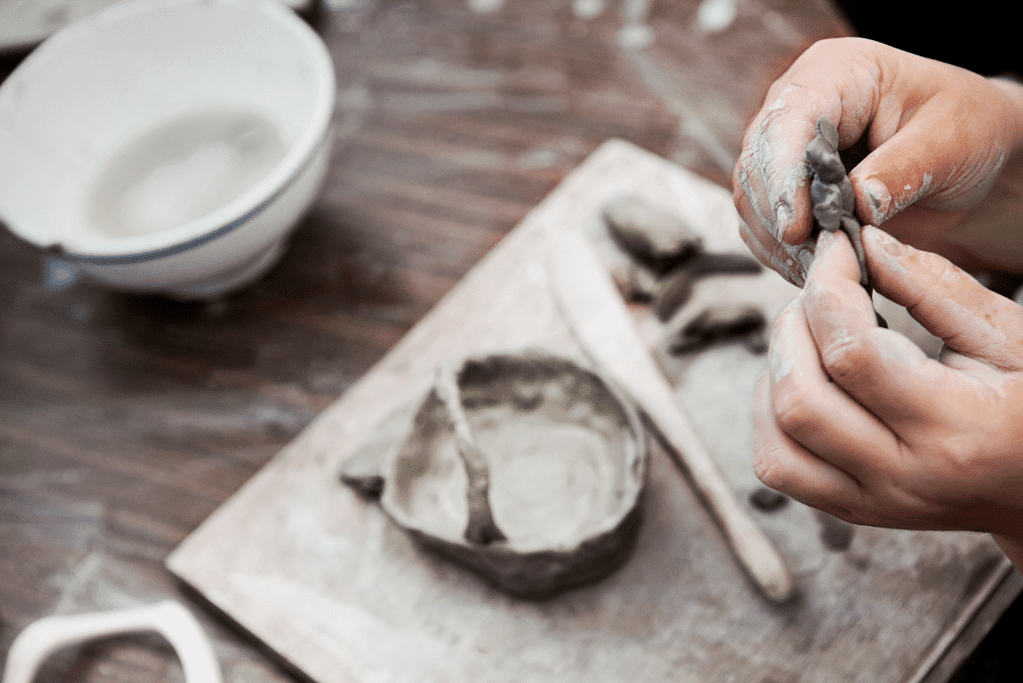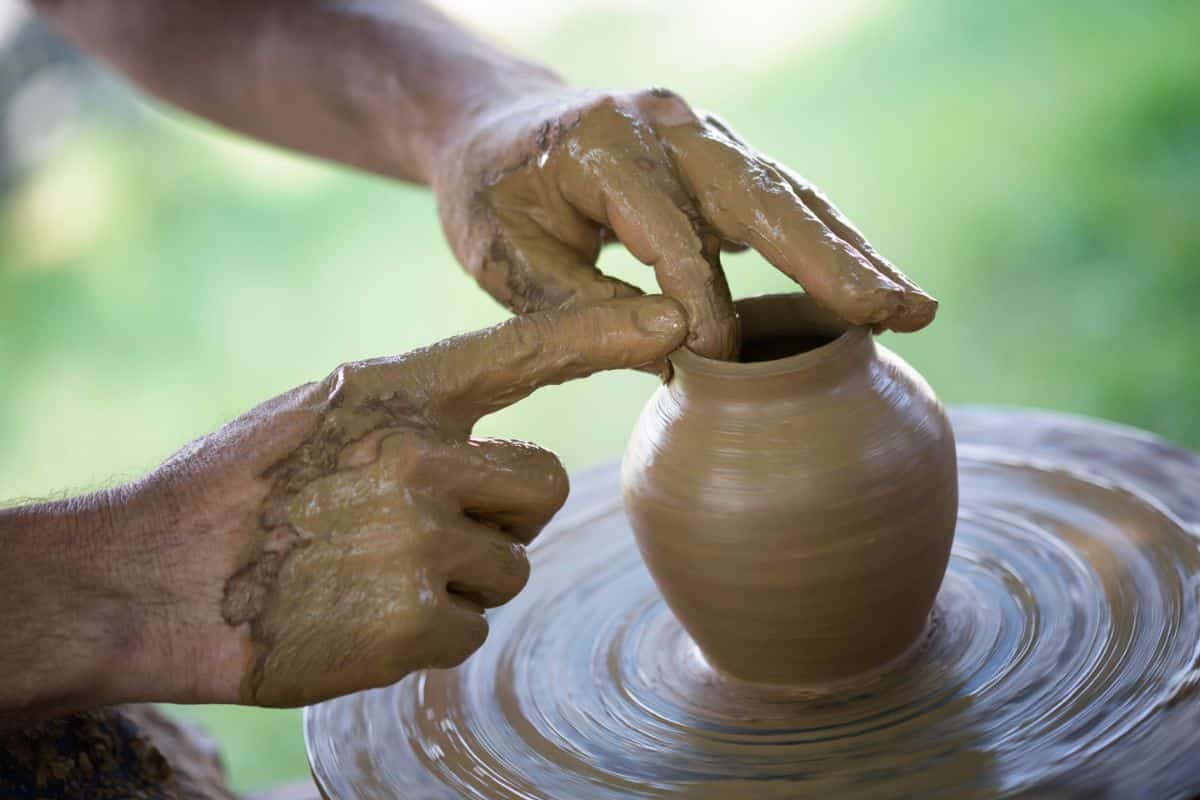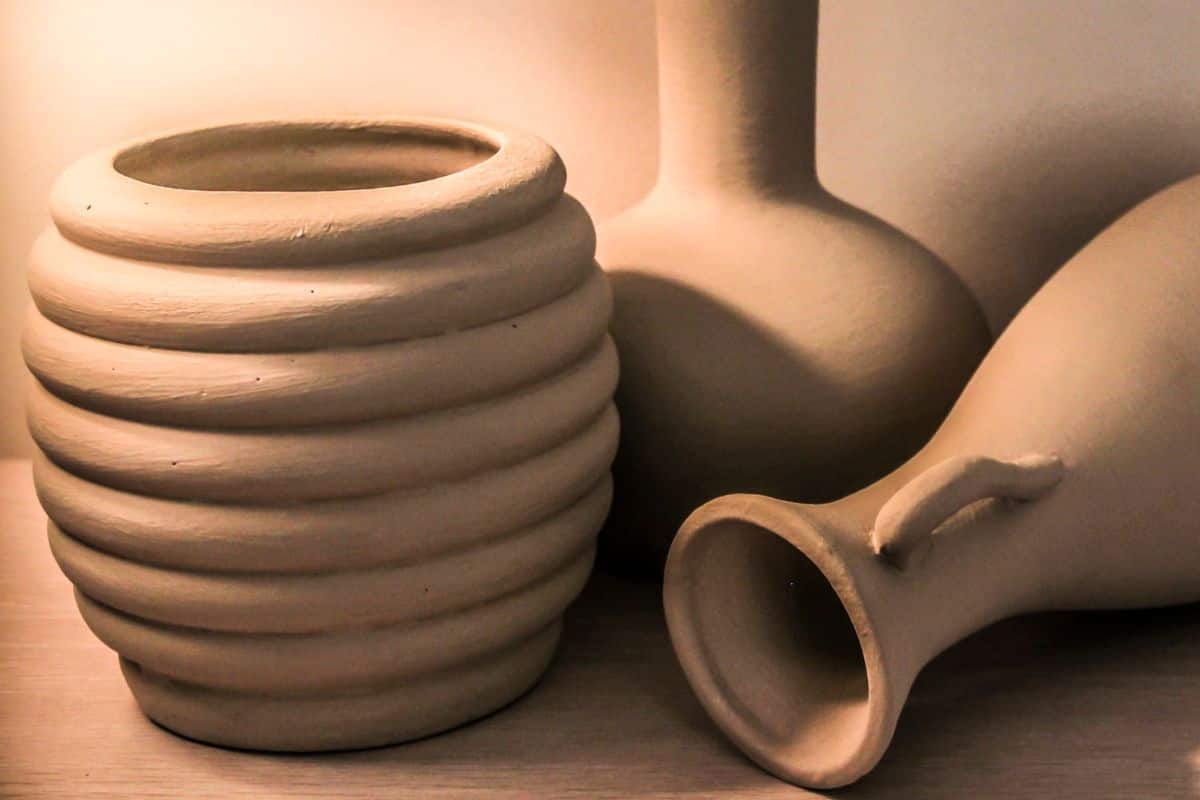If you are venturing into the world of ceramics and pottery, it is possible that you have come across the term slip and score. It is reasonable that you have been left confused or bewildered by the term, particularly if you have no previous knowledge or experience of pottery.

Although slip and score may seem like a nonsense phrase to you, it is actually a very common method that is used in pottery and ceramics that you will find yourself using over and over again.
In this article, we will look at what slip and score mean, how to do it, and when it is appropriate to use.
What Is Slip?
The first step in understanding what this method is and why it is so useful is to understand what the separate components mean. Slip refers to a mixture of clay with water, it is most often made from powdered clay and cold water.
When the correct consistency is achieved the slip should resemble heavy cream or oatmeal, although some pottery techniques require a slightly thinner consistency.
If your slip is too watery it is unlikely to perform as well as you want it to. Slip is most commonly used to create decoration on your pottery, for pouring molds, and to act as an adhesive between two pieces of clay.
Slip is often applied to clay using either a small paintbrush or simply the potter’s fingers depending on how fiddly the area is to access and the individual’s feelings on getting their hands covered in slip.
A paintbrush can also be useful in removing excess slip that oozes out when two pieces of clay are joined together.
What Is Score?
Score or scoring in ceramics and pottery refers to the process of scratching small marks on the surface of a piece of clay in order to help it adhere to another piece of clay.
The marks created when scoring are often done in a criss-cross pattern to improve the level of adhesion that can be achieved. When scoring, the best idea is to create as many lines as possible on the surface, this gives the slip much more space to seep into and create a strong grip.
Scoring is often achieved by using a sharp, thin tool that is capable of creating multiple small scratches with little effort. Potters may either use a specialist tool to create scoring or simply use a toothpick or other sharp tool that they have on hand at the time.
How To Make Slip

As mentioned above, making slip is essentially mixing powdered clay with water, however, the consistency of the substance is key in ensuring that your slip is functional in the way that you require.
Making slip can be a messy process that requires you to get your hands dirty.
The first step in making slip is to collect scraps of clay and old, drier pieces of clay blocks. Break the scraps and pieces up into smaller, coin-sized pieces, or if you want a slightly more watery consistency, you could grind the dried clay into a powder.
Once you have broken down your pieces of dried clay, add them to some cold water and let them soak for a while. Once you have let the clay soften in the water it is time to mix or blend the substance, this can either be done in a blender that you no longer need for food substances or manually if you don’t have a blender that you can use.
When the mixture has been blended, straining it through a small sieve or cheesecloth can help give it a smoother texture and ensure there are no lumps.
After you have prepared your slip, you can store it until you need to use it rather than making it fresh each time you make something.
Tools For Scoring
There are a few tools that you can use to create quality scoring on your pottery. There are two main tools that potters tend to use for scoring. They are a clay slip rectifier and a clay slip scorer.
Tools such as these are the easiest way to create effective scoring on your pottery, particularly if you are a beginner. However, it is not necessary to use specific tools to get the job done. Pencils, toothpicks, paperclips, and even forks can all do the job just as well.
However, it is important to make sure that the object you use allows for uniform scratches to be formed. If you score your pottery improperly, it won’t be able to adhere properly and can cause your creation to fall apart.
If you feel that the scratches you have made in the clay are not uniform enough to be effective, you can simply smooth over them using a bit of water and your finger and start again.
When To Use Slip And Score
Slip and score is most commonly used when attaching pieces of clay to each other. Clay work such as coil pots features slip and score techniques heavily with each coil having to have the method applied to it before adding it to the pot.
Similarly, attaching handles to a pot or mug requires the slip and score method to ensure that they are securely attached to the main body of the piece.
Slip and score should also be used when adding raised decoration to your clay piece to make sure that it stays in place permanently.
Common Errors With Slip And Score
There are a few errors that it is common for beginners to experience when trying the slip and score technique. Rushing the process is one of the most common pitfalls that potters experience when first using this method.
It is important to ensure that the scratches you make are uniform and neat to ensure that the slip can adhere properly.
Having the wrong consistency of slip can also hinder the effectiveness of this method. If your slip is too watery, there will not be enough clay in the mixture to create the adhesion that is required.
Similarly, if you require a runnier consistency for pouring molds but have made the slip too thick, it will not be able to correctly fill the details of the mold and you will be left with a shape that doesn’t look how you want it to. You should make different batches of slip for each requirement.
Not scoring deep enough is another reason why your slip and score method might not be working as well as you want it to.
While it is important not to score too deep, you can also create scratches that are too shallow for the slip to seep into meaning that it cannot produce a strong grip between the pieces of clay.
Achieving the correct depth of score can take a little while to perfect, much like the correct consistency of slip. Don’t be too disheartened if your slip and score don’t hold your handle on your pot the first time, you might have to adjust something to make it better next time.
Final Thoughts
Slip and score is a common technique that is used in many aspects of pottery and ceramics. As long as the technique is executed correctly, the added pieces of clay should have firmly adhered to the main body of the piece.
To add extra security and a more finished look, you can smooth the handle or decoration onto the main clay shape to create a more flush seal.








